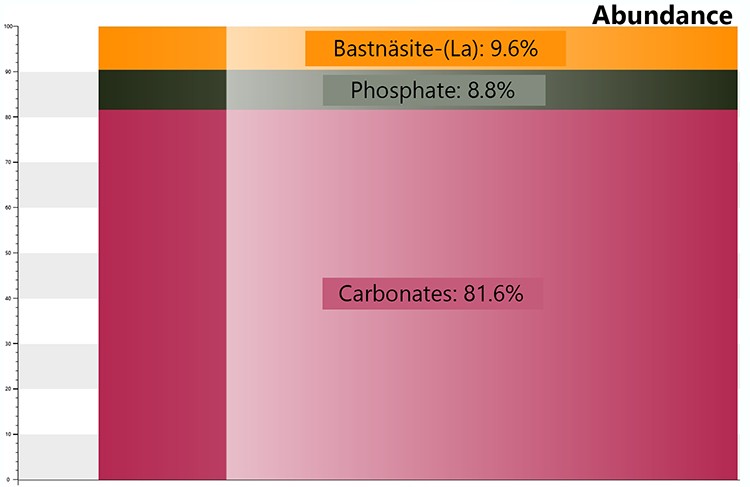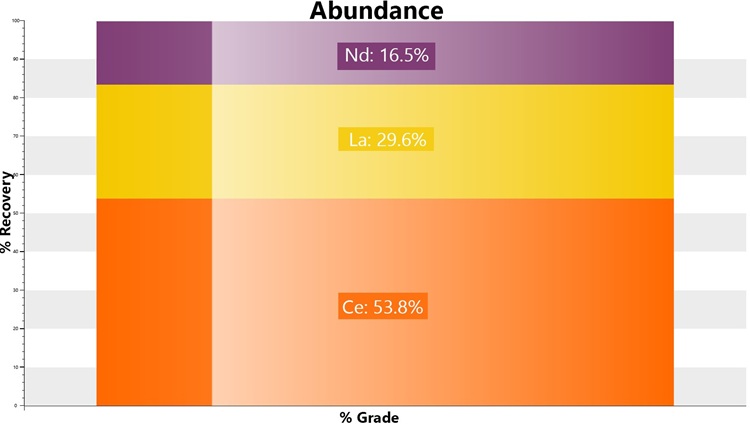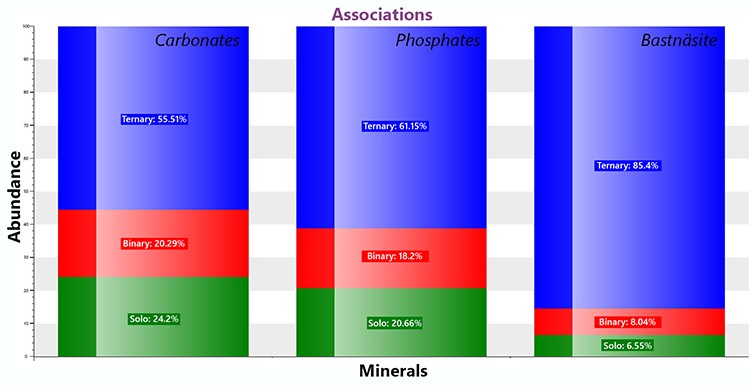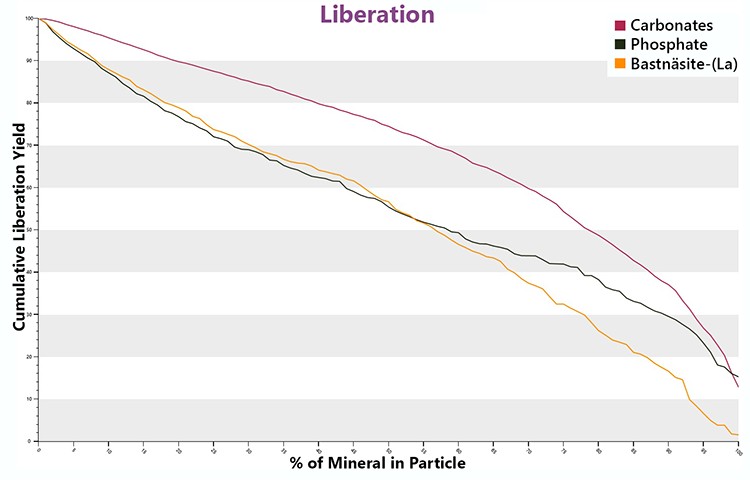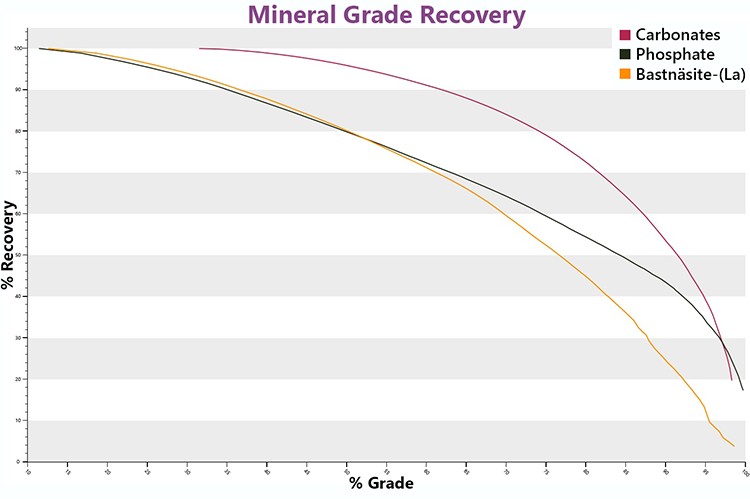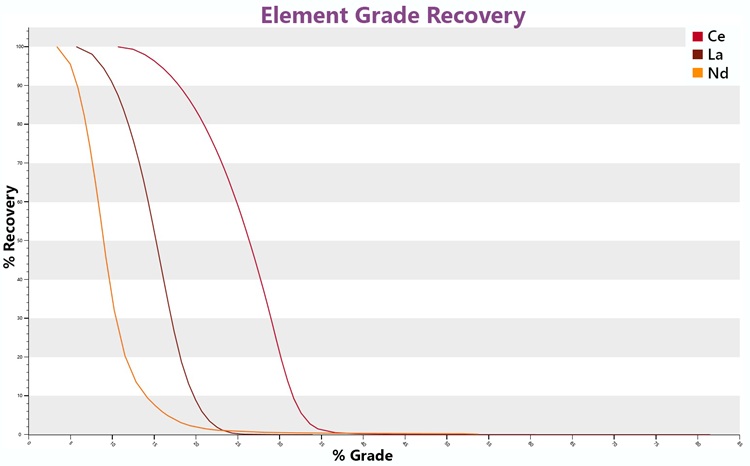Products
FIB-SEM
Nanomanipulators
OmniProbeOmniProbe CryoSoftware
AZtec3DAZtecFeatureAZtec LayerProbeTEM
Hardware
EDSUltim MaxXplore for TEMImaging
TEM CamerasSoftware
AZtecTEM
Application Specific Software
Additive manufacturingAutomated mineralogyBattery materialsCorrelative microscopyFibre analysisGeological materialsGunshot residueHigh Temperature EDS analysisNon-metallic inclusionsParticle AnalysisPharma applicationsTechnical cleanlinessData Processing Software
AZtecFlexAZtecCrystalRelateSample Preparation
Ion Polisher



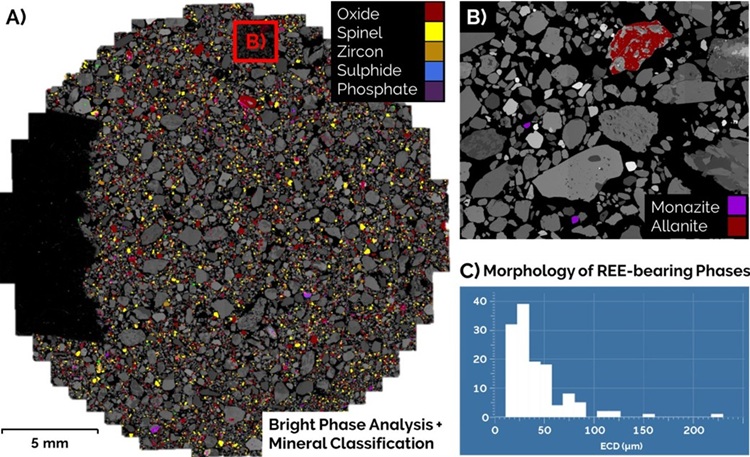
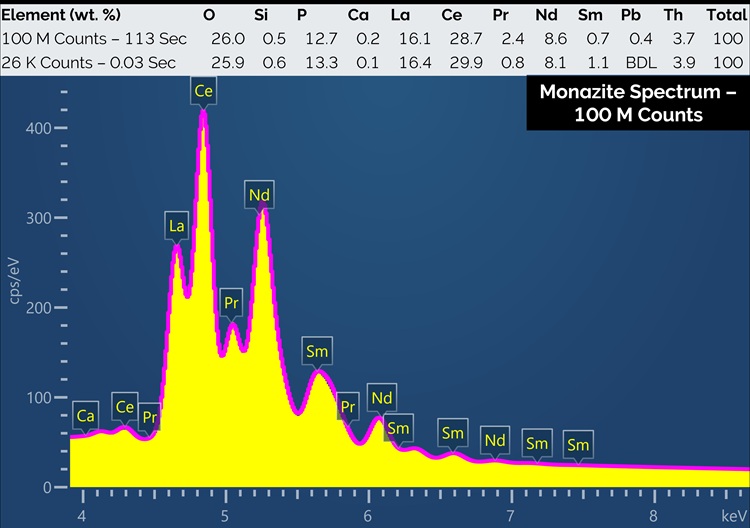
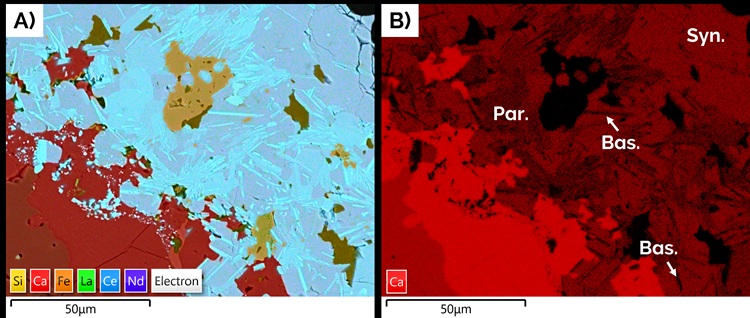
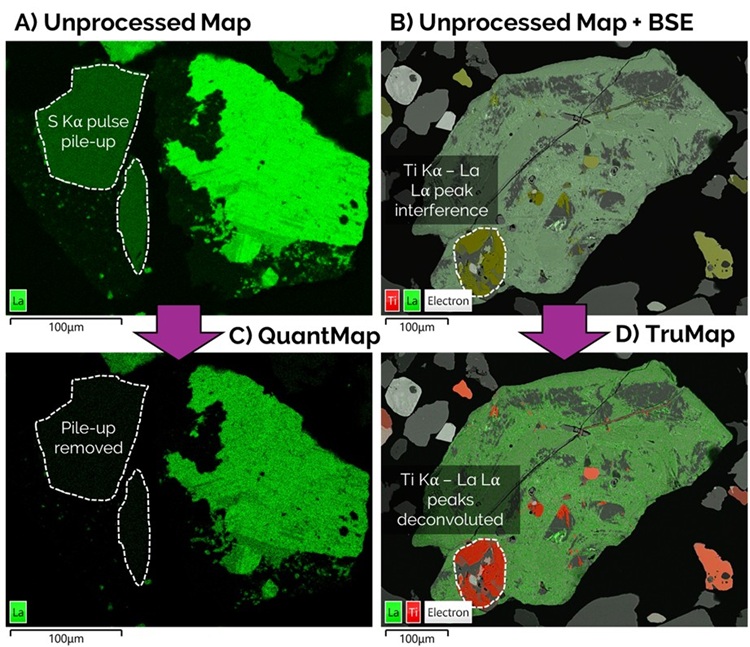
 Figure 5 - Large area feature analysis of mounted REE feedstock in 32 mm epoxy stub.
Figure 5 - Large area feature analysis of mounted REE feedstock in 32 mm epoxy stub.